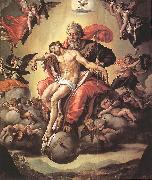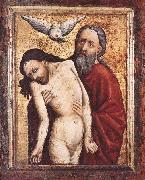
Oil On
Canvas, Real Flavor of Old Masters
|
BALEN, Hendrick van
|
|||
|
|
|||
| Dutch Baroque Era Painter, ca.1575-1632 Hendrik van Balen (1575 - 1632) was a Flemish painter, who was born and died in Antwerp. Van Balen studied art while traveling in Italy. He was the teacher of Anthony Van Dyck and Frans Snyders and was also a contemporary of many of the other famous Flemish artists, such as the Brueghels, Jan and Peter. | |||
|
|
|||
|
|
Holy Trinity BALEN, Hendrick van2.jpg Painting ID:: 4928 Visit European Gallery |
1620s Oil on panel Sint-Jacobskerk, Antwerp | |
Height Width |
INS/CM |
||
|
X |
|
||
|
|
|||
|
COECKE VAN AELST, Pieter
|
|||
|
|
|||
| Flemish Northern Renaissance Painter, ca.1502-1550 South Netherlandish painter, architect, and linguist. After extensive travels he settled in Antwerp, where he published (1539) a Flemish translation of Vitru-vius's De Architectura and (1539?C53) Serlio's multi-volume treatise into Flemish, French, and High German. | |||
|
|
|||
|
|
Holy Trinity new4/COECKE VAN AELST, Pieter-969568.jpg Painting ID:: 32288 Visit European Gallery |
Oil on panel, 98 x 84 cm | |
Height Width |
INS/CM |
||
|
X |
|
||
|
|
|||
|
unknow artist
|
|||
|
|
|||
|
|
|||
|
|
Holy Trinity new11/unknow artist-864994.jpg Painting ID:: 38395 Visit European Gallery |
c. 1450 Wood, 64,5 x 54,5 cm Hungarian National Gallery, Budapest | |
Height Width |
INS/CM |
||
|
X |
|
||
|
|
|||
|
MASACCIO
|
|||
|
|
|||
| Italian Early Renaissance Painter, 1401-1428 was the first great painter of the Quattrocento period of the Italian Renaissance. His frescoes are the earliest monuments of Humanism, and introduce a plasticity previously unseen in figure painting. The name Masaccio is a humorous version of Tommaso, meaning "big", "fat", "clumsy" or "messy" Tom. The name was created to distinguish him from his principal collaborator, also called Tommaso, who came to be known as Masolino ("little/delicate Tom"). Despite his brief career, he had a profound influence on other artists. He was one of the first to use scientific perspective in his painting, employing techniques such as vanishing point in art for the first time. He also moved away from the Gothic style and elaborate ornamentation of artists like Gentile da Fabriano to a more natural mode that employed perspective for greater realism. Masaccio was born to Giovanni di Mone Cassa??i and Jacopa di Martinozzo in Castel San Giovanni di Altura, now San Giovanni Valdarno (now part of the province of Arezzo, Tuscany). His father was a notary and his mother the daughter of an innkeeper of Barberino di Mugello, a town a few miles south of Florence. His family name, Cassai, comes from the trade of his grandfather Simone and granduncle Lorenzo, who were carpenters - cabinet makers ("casse", hence "cassai"). His father died in 1406, when Tommaso was only five; in that year another brother was born, called Giovanni after the dead father. He also was to become a painter, with the nickname of "Scheggia" meaning "splinter". The mother was remarried to an elderly apothecary, Tedesco, who guaranteed Masaccio and his family a comfortable childhood. | |||
|
|
|||
|
|
Holy Trinity new12/MASACCIO-229368.jpg Painting ID:: 40173 Visit European Gallery |
mk156 c.1428 667x317cm | |
Height Width |
INS/CM |
||
|
X |
|
||
|
|
|||










